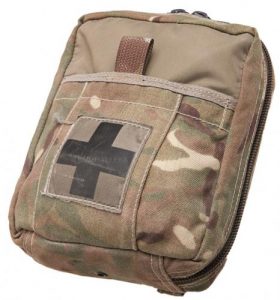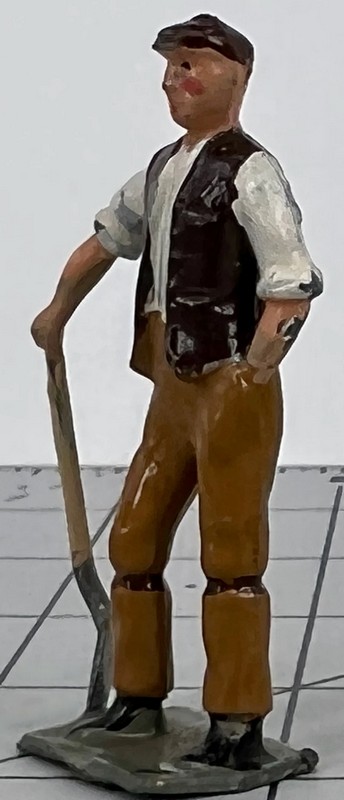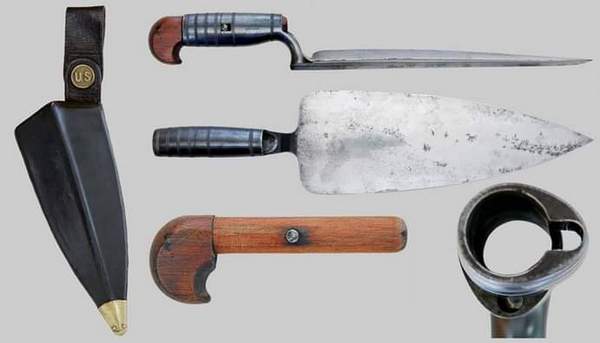Recently I have been reading some new stuff on “cold-dry” or “snow” survival.
Dipping back into one of my older books, I noticed this caption on an image:
“Most soldiers trained in Arctic warfare prefer to keep their webbing attached to their backpack, rather than over their clothes, which restricts movement. ”
“Survival” (1988), Len Cacutt (p.124)
If it is acceptable to not wear webbing during Arctic operations, this suggests that it may be practical to do without many of the contents of the webbing during operations in warmer climes.
Given the date and origin of the book, the webbing referred to would be the British 58-pattern. Below is an illustration from the SLR-era. The following comments are still applicable to later systems and those of many other nations.
As can be seen from the illustration, webbing carried a lot of gear that was not immediately mission relevant.
Earlier in “Survival” there is a recommendation to “eliminate all non-essential items” (p.60). It then shows webbing loaded with wash-kit, stove, mess-tins, boot-polish, cutlery etc.
Part of the problem is the kidney pouches. Their large size is a temptation to load them up.
The pouches cannot be easily removed from the system when the weight they carry is not needed.
The position of the kidney pouches also hindered the use of efficient rucksacks that transfer the weight to the pelvis.
The consequence of all this is the webbing is heavy and bulky. It cannot be worn comfortably unless the belt is clinched tight, and it requires some system of yoke or suspenders.
In the SLA Marshall loadout recently described, a notable feature was carrying the ammunition only in bandoliers. No equipment belt is mentioned. Presumably there is one, since the soldier had to carry a water canteen and possibly a pouch for his pair of grenades. However, this belt would be relatively light without 80 rounds (about 5 lbs) of ammunition weighing it down.
Note in the photo below the GI wears a belt without any clip-pouches and does not use suspenders.
Reading about pulks produced a similar observation from a Dutch source:
“As a result, Marines are now carrying a heavy backpack while moving on skis in snowy areas. An additional disadvantage of a complete package on the man is that the function of the worn clothing is not fully utilized (breathing capacity).”
In sub-zero operations it is important to avoid overheating.
Condensing perspiration can soak into clothing, reducing its insulating capability and chilling the body. This moisture can even freeze within the clothing.
There are a number of solutions to this problem. One is to not wear too much insulation. Another is to pay attention to the permeability and venting of clothes. Sweat must be prevented or allowed to escape the clothing before it becomes cold enough to condense.
It should be obvious that venting, air-circulation and removing excess insulation will all be hindered by the torso being constricted by a system of tight straps.
Air-circulation and heat-loss remain important considerations in warmer or hot-climates too.
Not only is what we carry important, but how we carry it!
Decreasing the mass and bulk of webbing gear to improve air-circulation will greatly improve soldier comfort and performance. As a regular reader so eloquently puts it, it “reduces sweating without the benefits!”
A simple chest/belly rig, as described here, should be used for the primary ammunition supply. This will have three two-magazine pouches and a couple of smaller pouches for up to six (standard size) grenades, for example, two smoke and four fragmentation grenades. The only other features of the rig would be a snap-link, map/dump pocket, small weapon-cleaning kit, flashlight carrier and a mounting for a pec-knife. comms and first field dressing.
An equipment/waist belt would be lightly loaded with an CI-IFAK pouch and up to two litres of water.
In sub-zero conditions, water might be better carried in a bladder worn under the clothing to keep it liquid.
Possible additions to the equipment belt would be a handgun, handgun-magazines, long knife and possibly additional grenades and rifle-magazines. Extra munitions may be better carried by other means such as a claymore bag.
This configuration leaves the back clear for the more comfortable carrying of backpacks.








